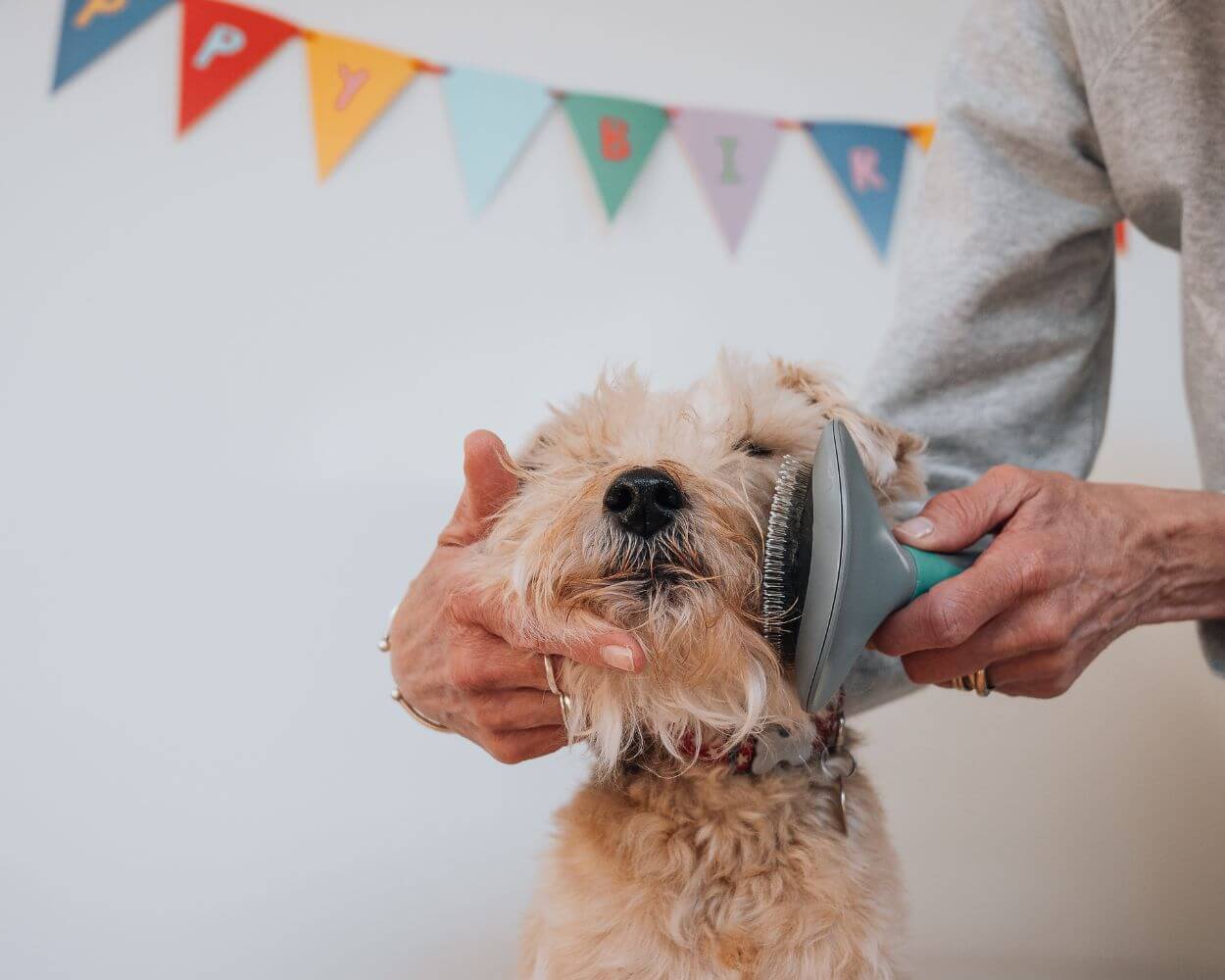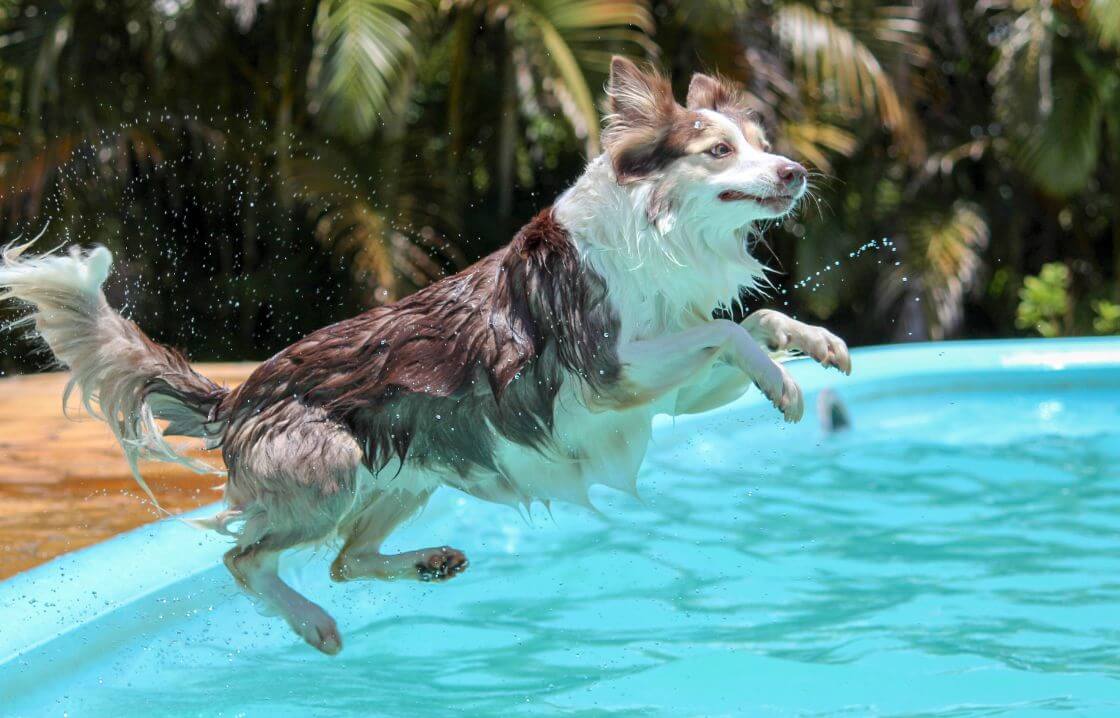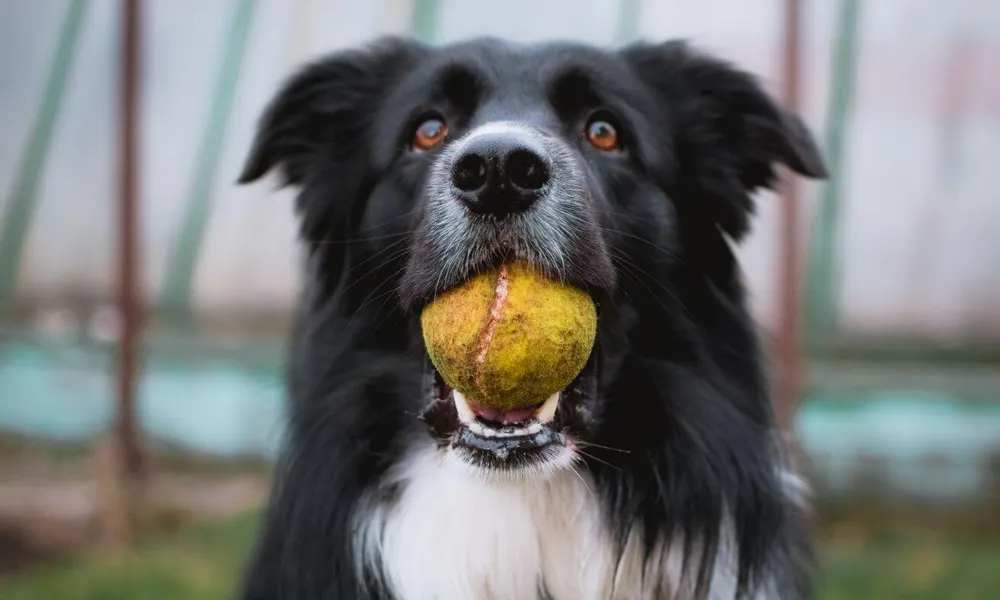Unleashing the Mystery: Why Dogs are Head Over Paws for Tennis Balls
Dogs & Tennis Balls - a match made in heaven. It's a bond that has stood the test of time, leaving us in awe of their unwavering devotion to these fuzzy spheres. But have you ever wondered why dogs are head over paws for tennis balls? It turns out there are a few reasons behind this delightful canine obsession.
In a nutshell, dogs love tennis balls because playing with them taps into their natural instincts. The chase, catch, and retrieval mimics the thrill of the hunt, releasing endorphins and creating positive feelings. The perfect size, texture, and bounce of tennis balls make them irresistible, satisfying a dog's need for stimulation and engagement. It's a combination of instinct, sensory experience, and the joy of play that fuels their adoration for these fuzzy spheres.
Tennis balls seem to hold an inexplicable charm over mans best friends, captivating their attention and igniting a boundless enthusiasm. But have you ever wondered why dogs go gaga for balls, more specifically, tennis balls? In this insightful article, we'll delve into the reasons behind their infatuation, explore the potential concerns, and provide guidance for a safe and enjoyable playtime.
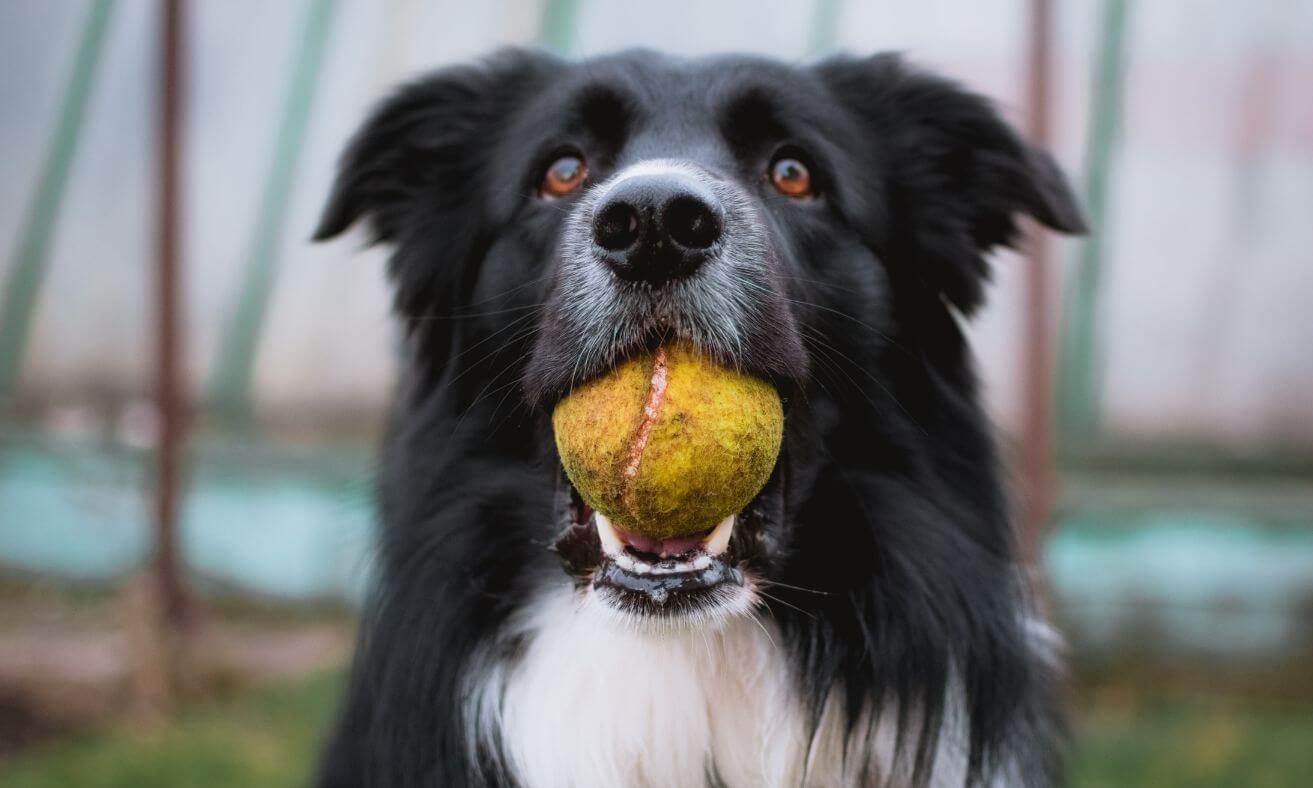
Primal Instincts: How Dogs' Prey Drive Influences Their Love for Tennis Balls
Playing with a tennis ball goes beyond a simple game for dogs; it taps into their primal instincts and natural hunting behaviors. Dogs are instinctual hunters, and chasing after a moving object triggers their predatory sequence. When they run full tilt, leap through the air, and snatch the ball, they experience an unmatched joy, as if they're transported back to their ancestral roots, indulging in the thrill of the hunt.
The deep-rooted connection between dogs and tennis balls lies in this primal instinct. As they chase and retrieve the ball, they mimic the chase and capture of prey, triggering their hunting instincts. The unpredictable bounce and roll of the ball imitate the movement of prey, keeping them engaged and enhancing their overall experience. This primal connection makes tennis balls an irresistible object of fascination for dogs.
Moreover, playing with tennis balls offers dogs a valuable physical exercise opportunity, allowing them to expend energy and stay active. It provides both mental and physical stimulation, improving their overall well-being. By satisfying their natural instincts, playing fetch with tennis balls provides an outlet that helps prevent boredom and destructive behavior.
It's important to note that not all breeds may display the same level of interest in chasing tennis balls, as some breeds have a stronger innate prey drive than others. However, for many dogs, the chance to chase and retrieve a tennis ball satisfies their primal instincts and brings them immense joy.

The Fuzzy Wuzzy: Explaining Dogs' Affinity for the Fuzzy Texture of Tennis Balls
But it's not just the chase that captivates them. The perfect fit of tennis balls within a dog's mouth adds to the allure. These balls are just the right size for our furry friends to grab and carry around with ease. The satisfying sensation of sinking their teeth into the fuzzy exterior creates a tactile experience that dogs find incredibly enjoyable.
The bounce factor is another reason why dogs go gaga for tennis balls. The unpredictable trajectory keeps them engaged and on their toes. Each bounce creates an element of surprise, stimulating their senses and keeping them fully immersed in the game. The sheer joy on their faces as they eagerly anticipate the next bounce is simply priceless.
Tennis balls possess an ideal size that fits comfortably within a dog's mouth, making them easily graspable during playtime. This satisfying tactile experience enhances the joy and engagement dogs feel when interacting with these balls.
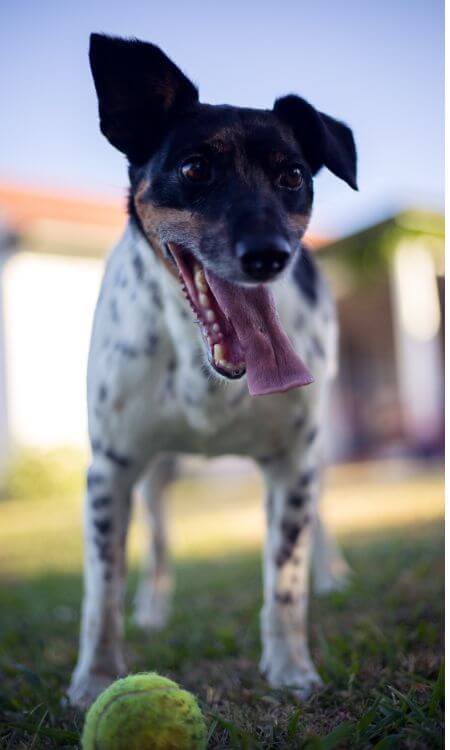
The Chemical High: Understanding the Role of Endorphins in Dogs' Love for Tennis Balls
Engaging in a lively game of fetch with a tennis ball triggers a chemical reaction in a dog's brain, resulting in the release of endorphins and dopamine. These pleasure-inducing chemicals generate feelings of happiness and contentment, deepening the bond between dogs and their cherished tennis balls. It's akin to a natural high, a euphoric experience that keeps them yearning for more.
So, the next time you witness your pups eyes light up at the sight of a tennis ball, remember that it signifies more than just a toy. It serves as an opportunity for them to tap into their instincts, revel in pure joy, and fortify the unbreakable connection between humans and dogs. It's a testament to the extraordinary power of simple pleasures, capable of bringing immeasurable happiness to our four-legged companions.
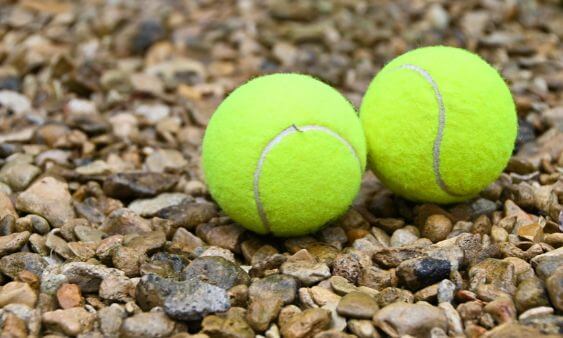
Seeing Yellow: Unraveling the Fascination of Dogs with Yellow Tennis Balls
The bright yellow color of tennis balls has a remarkable effect on capturing a dog's attention. Dogs are drawn to this vibrant hue because it stands out prominently against the backdrop of grass or pavement, making it highly visible to them. The contrast between the yellow ball and the surrounding environment triggers an immediate desire for pursuit and play. This phenomenon can be attributed to dogs' visual perception, as they have a greater sensitivity to yellows and blues. Therefore, when a dog spots a yellow tennis ball, it acts like a beacon in their world, igniting their natural instinct to chase and engage in playful activities.
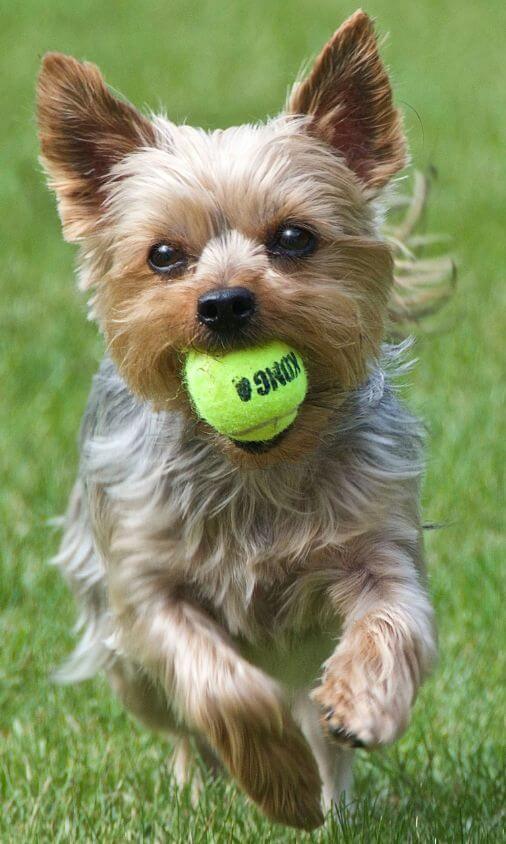
Breed Preferences: Exploring Why Some Dog Breeds Love Tennis Balls
While dogs of all breeds can develop an affinity for tennis balls, certain breeds are commonly associated with a particular fondness. Retrievers, such as Labradors and Golden Retrievers, are renowned for their love of fetching and are often seen dashing after tennis balls with unbridled enthusiasm. Their strong retrieving instincts and natural athleticism make them ideal candidates for games involving tennis balls.
Additionally, Border Collies, Australian Shepherds, and Cocker Spaniels also exhibit a high level of interest in chasing and retrieving tennis balls due to their intelligent and energetic nature. These breeds thrive on mental and physical stimulation, and playing fetch with a tennis ball offers the perfect outlet for their natural drives. However, it's important to note that individual preferences can still vary among dogs of the same breed. Some dogs may show more interest in tennis balls while others may have different toy preferences altogether.
Why Dogs Love Tennis Balls FAQs?
What makes tennis balls so appealing to dogs?
Dogs are naturally attracted to tennis balls due to a combination of factors. The texture, bounce, and size of tennis balls make them enticing for dogs to play with. Additionally, the bright color of tennis balls, particularly the vibrant yellow, catches their attention and triggers their instinct to chase and retrieve.
Why do some dogs become obsessed with tennis balls?
Some dogs develop an obsession with tennis balls because playing with them activates their natural predatory sequence. Chasing and retrieving a tennis ball mimics the behavior of pursuing prey, satisfying their innate instincts and providing mental and physical stimulation. The repetition and reward of fetching the ball can create a strong bond between dogs and their favorite toy.
Do certain breeds have a stronger affinity for tennis balls?
While dogs of all breeds can enjoy playing with tennis balls, certain breeds are commonly associated with a particular fondness for them. Retrievers, such as Labradors and Golden Retrievers, are renowned for their love of fetching and are often seen dashing after tennis balls with great enthusiasm. Border Collies, Australian Shepherds, and Cocker Spaniels also exhibit a high level of interest in chasing and retrieving tennis balls due to their active and intelligent nature.
What is the science behind why dogs love tennis balls?
Playing with a tennis ball stimulates the release of endorphins and dopamine in a dog's brain, creating a sense of pleasure and happiness. The act of chasing, retrieving, and interacting with the ball engages their natural instincts and provides mental and physical exercise. The unpredictability and movement of the ball also contribute to the excitement and enjoyment that dogs experience during play.
Can dogs prefer other types of balls over tennis balls?
While many dogs adore tennis balls, individual preferences can vary. Some dogs may have a preference for other types of balls, such as rubber balls or squeaky balls. It's important to observe your dog's behavior and determine which type of ball they enjoy the most. Providing a variety of toys can help cater to their specific preferences and keep them engaged during playtime.
Safety First: Keep Your Dog Safe From Tennis Balls
It's evident that dogs have an undeniable affinity for tennis balls, as the combination of their natural instincts, sensory experiences, and the sheer joy of play make these fuzzy spheres irresistible to them. However, as responsible pet owners, it is our duty to prioritize their safety during playtime. By taking a few extra precautions, we can ensure that our beloved canine companions continue to enjoy their favorite pastime without any harm.
One crucial aspect of maintaining their safety is regularly inspecting tennis balls for signs of wear and tear. Over time, the outer covering of the ball can become damaged, creating small tears or loose threads that may pose a choking hazard. By giving each ball a quick once-over before each play session, we can easily identify any potential risks and replace worn-out balls with new ones. This simple habit goes a long way in preventing accidents and ensuring our dogs' well-being.
Monitoring chewing behavior is another essential step in keeping our dogs safe during play with tennis balls. While some dogs enjoy a good game of fetch or gentle mouthing, others have a more destructive chewing tendency. If your dog falls into the latter category, it may be wise to avoid using tennis balls altogether or opt for tougher alternatives specifically designed for heavy chewers. This way, you can prevent your furry friend from accidentally ingesting any loose fibers or materials that may cause harm.
Additionally, choosing the appropriate size of tennis ball for your dog is crucial. Using a ball that is too small poses a choking risk, while a ball that is too large may be challenging for them to pick up or carry comfortably. Ensuring that the size of the tennis ball matches the size of your dog's mouth will not only enhance their safety but also maximize their enjoyment during play.
While tennis balls can undoubtedly bring immense joy to our canine companions, it is our responsibility to prioritize their safety. By regularly inspecting the balls, monitoring chewing behavior, and selecting the appropriate size options, we can create an environment where our dogs can engage in playtime confidently and without unnecessary risks. Remember, a happy and healthy playtime is built on a foundation of safety.

The Enigmatic Love Affair: Why Dogs Can't Resist Tennis Balls
The fascination that dogs have with tennis balls is a captivating blend of natural instincts, tactile sensations, and the joy of play. While their love for these fuzzy balls may seem puzzling, it can be attributed to various factors uncovered through scientific research and observations.
Playing with tennis balls taps into the inherent predatory sequence that dogs possess, triggering their chase and capture instinct. The effort exerted in pursuing and retrieving a ball creates a sense of fulfillment and satisfaction, activating the reward centers in their brains.
The unique characteristics of tennis balls, such as their bounce action, springy texture, and vibrant color, contribute to their appeal. Dogs are drawn to the way they move and feel in their mouths, stimulating their senses and providing a gratifying tactile experience during play.
Moreover, the size of tennis balls is perfectly suited for dogs to hold comfortably in their mouths, further enhancing their enjoyment. It mimics the sensation of carrying prey, connecting back to their primal instincts and reinforcing their engagement with the game.
When a dog interacts with a tennis ball, it triggers the release of endorphins and dopamine, creating feelings of pleasure and happiness. This chemical response further deepens their attraction and solidifies the connection between tennis balls and positive experiences.
In conclusion, the allure of tennis balls for dogs is a complex interplay of their innate instincts, the sensory gratification they provide, and the neurochemical reactions they elicit. Their unwavering affection for these humble objects continues to captivate us, revealing the fascinating and timeless bond between dogs and their beloved tennis balls.
Thanks for Reading-
J
Related Reads:
